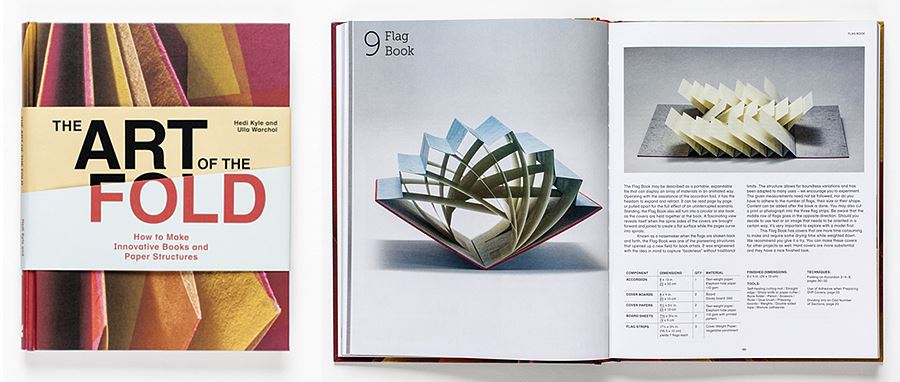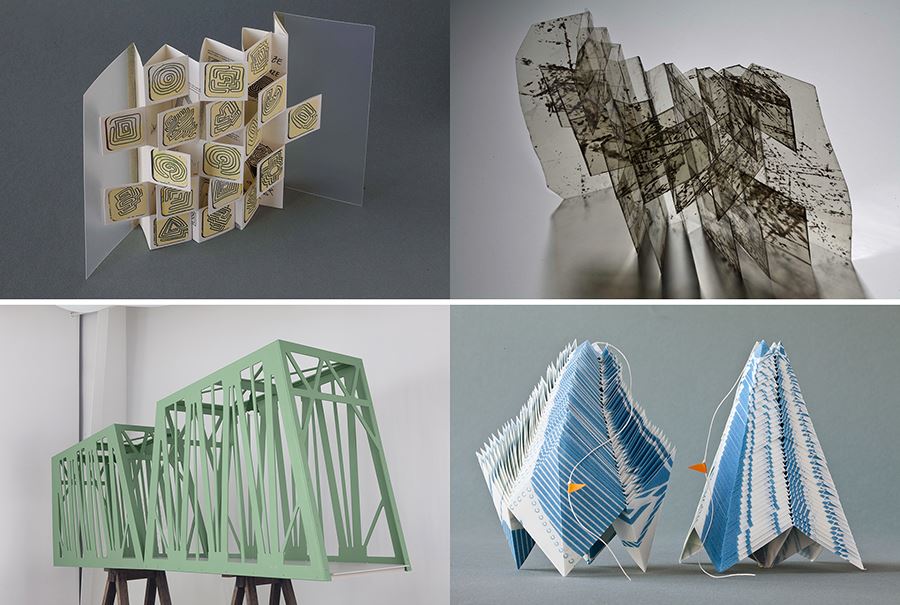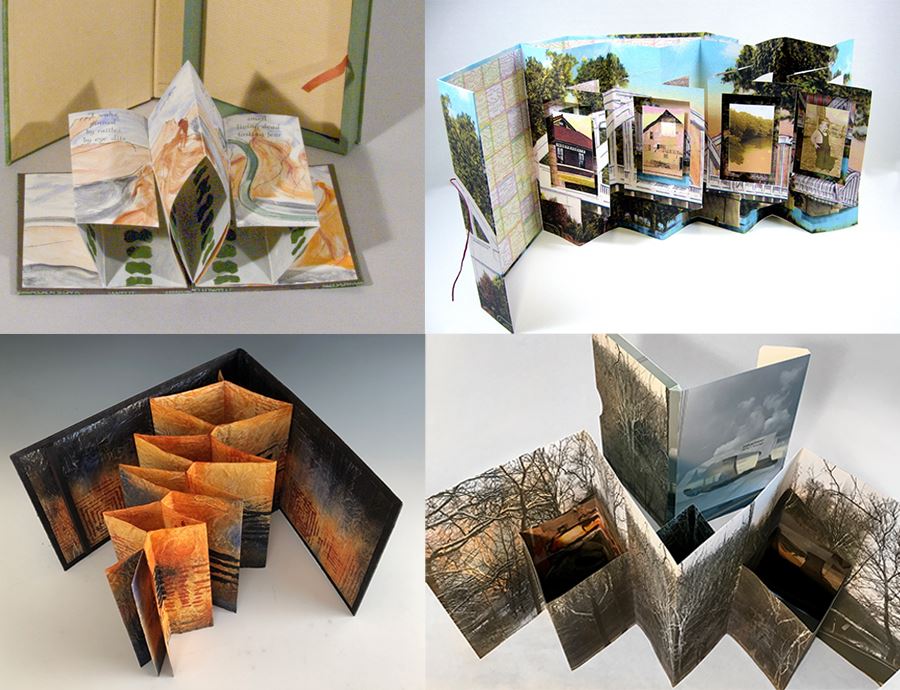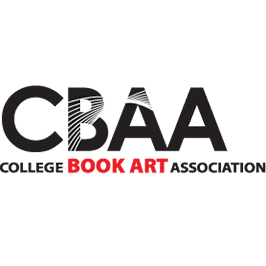“What happens when the book is stripped away of centuries of preconceptions and is allowed to reveal something else: playfulness, utility, invention? Expanding the notion of the book is what the structures in [The Art of the Fold] attempt to do. . . . [T]he book as a structural object is celebrated while content is considered in a new and unconventional way" (Hedi Kyle, Preface, The Art of the Fold).
As a long time fan of Hedi Kyle’s folded book structures, I was thrilled when The Art of the Fold, How to Make Innovative Books and Paper Structures by Hedi Kyle and Ulla Warchol was published. Hedi Kyle was born in Berlin, graduated from the Werk-Kunst-Schule in Wiesbaden, Germany with a degree in graphic design, and shortly thereafter emigrated to the United States. The 1970s in New York City were an amazing time of revival and experimentation. In The Art of the Fold’s preface Hedi recalls teaching at the Center for Book Art, where under the direction of founder Richard Minsky the mission was “to push concept, materials, printing and making of artist books in a new direction.” Bridging her training in traditional binding and conservation with innovation, Hedi shaped, folded, manipulated and formed paper, creating new structures. Throughout her 45-year career as Head Conservator at the American Philosophical Society in Philadelphia and as a professor in the MFA Program for Book Arts and Printmaking at the University of the Arts, Hedi has taught and mentored a generation of conservators and book artists. As a pioneer, an inventor, and a generous teacher Hedi has revolutionized the field of books arts.

As a designer I am captivated by the-angle-cut-and-folded, belly-band book jacket with its red text ‘FOLD’ on a powder blue ground, folded over the black on tan text ‘The ART of the FOLD.’ This design element on the book itself demonstrates Hedi’s interest in creative folding that reveals content. In her preface she says, “Expanding the notion of the book . . . [e]xploring its tactile, sculptural form, primarily through folding methods, the book as a structural object is celebrated while content is considered in a new and unconventional way.” At a workshop I took from Hedi, she emphasized that the structure exists to support the art and content of the book. With innovative structures content is possible that would not otherwise be conceivable.
Ulla Warchol, Hedi’s daughter, graduated from the Cooper Union in New York City with a degree in architecture; befittingly she is interested in a multidisciplinary approach to structure, from large scale works—buildings and interiors—to small scale works—books, fabrications and collaborations with artists. Mother and daughter team tell how they created their ground breaking book on folding-based book structures by “going back through 40 years of archives of Hedi’s structures, taking models apart, hundreds of hours of folding, fine tuning proportions and dimensions, and then drawing, first by hand and then in Adobe Illustrator” (artofthefold on Instagram). The result is an admirably clear and inspiring book of unique designs from flag books to blizzards and fishbones to nesting boxes.

Top: Hedi Kyle, Maze, hand drawings, facsimiles of mazes; Mica Flags, Mica Sheets.
Bottom: Ulla Warchol, The Memory Palace, collaborative installation; Stationery Departures, collaboration with Hedi Kyle. Images courtesy of Hedi Kyle and Ulla Warchol.
In her preface, Hedi talks about the beginning of her structures, “I can still remember the thrill I experienced when my first folded book structure emerged from my fingers—how eager I was to explore its possibilities and to share it with whoever was interested. The Flag book . . . I now call it. . . . Little did I know that this simple structure would have legs and be the catalyst for the next forty-plus years of thinking about and making books.” The Flag Book, created by Kyle in 1979, is referred to by the Guild of Book Workers as “the single most influential structure in the world of contemporary bookmaking.”
Shortly after the publication of The Art of the Fold, Alicia Bailey created an international exhibition of artists’ bookworks utilizing structures found in the publication. Many artists created works just for exhibition—I know I did. The well-managed exhibition was shown at multiple venues in the Denver metro area; an online catalog was produced and fully a third of the artists’ bookworks were sold. Alicia Bailey is an artist, publisher with 60 titles under the imprint of Ravenpress, and a gallerist, dealer, and curator for Abecedarian Artists’ Books. Germane to her keen interest in creating The Art of the Fold exhibition, Alicia defines “artists' books as unique, interactive, sculptures realized in the form of the book.”

Top: Alicia Bailey, Anguine, Slotted Zig Zag; R. D. Burton, Verdigris, Panorama.
Bottom: Connie Stricks, Labyrinth, Fishbone Fold; Kathy T. Hettinga, DISPLACEMENT, One-Sheet, Eight-Section Offset Cut. Images courtesy of Alicia Bailey/Abecedarian.
Briefly, I will describe how the Hedi Kyle structure—One-Sheet, Eight-Section Offset Cut—inspired my work for DISPLACEMENT, which received an award at Intersections: Book Arts as Convergence, CBAA Member’s Juried Exhibition, NOLA. The book is about removal from the normal location or position, and shows bleak mid-winter trees with farmhouses perched precariously near highways and dense woods in PA, overtaken by high-voltage lines, power plants and pipelines. The offset cuts, reminiscent of an Advent calendar, conceal and reveal, small creatures and environmental hazards hidden within: an endangered/deceased brilliant, orange-headed, female Western oriole, the Three Mile Island towers, and the Atlantic Sunrise pipeline cutting between suburban homes. Yet, the branches of sycamores create white lines out of the dense woods—tiny pathways of hope in a bleak time.
For information on how each artist used their selected structure to support, reveal, and expand their content in new and unconventional ways please visit the Art of the Fold exhibition on the Abecedarian Artists’ Books website.
KT Hettinga is an award-winning artist in design, artist’s books, digital images/prints, and photography. Twice awarded the Distinguished Professor of Art, she designs for non-profits. Her books are in collections from NMWA to UCLA. Residencies include: Yale Research Fellow, Luce Center for Arts and Religion, Pyramid Atlantic, WSW and VSW.

